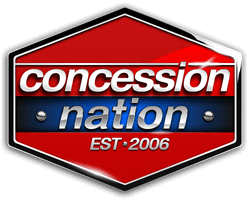Some experts argue that the location of food trucks are even more important than the menu. That may very well be true, as experienced food truck owners know that something as simple as parking on the wrong side of the street or not having an awning to provide shade or protection from rain can undermine their sales for that day.
Food trucks’ primary strength is mobility, which allows them to go to the customers instead of forcing a customer to find you. However, your location will mean the difference between being a convenient option or “out of sight, out of mind.”
So, how do you know which parking location will work best for you?
Start at the Beginning
It will waste time and money if you choose a location where you cannot legally park your food truck. It can also damage your reputation as a business to do so. Imagine having an officer issue you a ticket while you are trying to serve customers. You have far better things to spend your money on than fines!
Take some time to learn the do’s and don’ts for vendors in your area. Many cities have specific ordinances that you must follow as a food trailer or truck. Know those by heart and keep up on any updates or changes.
Scoping Out the Right Location for Food Trucks
It is a good idea to investigate potential locations on foot, as that is how many of your customers will be traveling. Of course, you should also consider how driving guests will get to you as well. Be sure that there is available parking nearby that they can use.
When you are doing your initial research, you should look for the following qualities or attributes in a location:
-
Available Space
You need to not only have enough room for your food truck, but you should also have enough space for your customers. Potential customers will not stop near a location that seems unsafe or crowded. Be sure there is enough room for customers to form a line, if necessary. Consider whether you want them to be able to linger nearby and eat, or if they will have to keep moving.
-
Visibility
Customers need to notice you. Will they be able to spot your truck in a potential location or will you blend in too much? Consider where car and foot traffic are most likely to approach.
In addition, try to make sure you create a safe line of visibility around you. Cars driving past need to be able to safely maneuver, and pedestrians need safe crossing zones.
-
Competition
If you have found a great spot, chances are that other food trucks have been here as well. Visit the location a few days to see if you spot any other food trailers or trucks. Having other food trucks in the area isn’t a deal breaker, but you should take some time to compare their menu to yours. If they are very similar, you may not want to compete with the other food truck. Scope out the nearby restaurants. Do they offer food that is similar to yours? If so, this spot may not be ideal, either.
-
Convenience
You want to be sure that it is easy for customers to get to you. Also, consider parking as well—will it be easy to pull off the road to visit your food trailer?
-
“Feeders”
Some of the best locations for food trucks are near events or attractions that will have a lot of foot traffic. Common examples include:
-
Movie theaters
-
Concert halls or event centers
-
Shopping malls
-
Outdoor event spaces
-
Bars or clubs
-
Aquatic centers
-
Parks
-
Carnivals and Festivals
-
Spots near public transportation or large office buildings may be a good idea as well.
Appropriate Rotation: When to Move On
Most food trucks do not stay in one location. Instead, they rotate among a few prime locations. Changing locations too much can also be detrimental to your business. Sticking to a few locations and rotating them regularly is usually a good balance for most food trucks.
Create a schedule that works for you. You should pick one or two locations per day. Then, you can rotate among several options throughout the week. For example, you may plan to be near the downtown businesses on Tuesdays and Thursdays, and perhaps move near the movie theater on Friday and Saturdays. Decide what works for you and stick to it so you can service regular clients in more than one location.
Don’t take your location lightly; it can mean the difference between just scraping by and a booming food truck business. Planning and location research beforehand works.
